Saint Simeon Monastery By Camel
This is the fifth post I’ve written about the many things we saw and did on a recent trip to Aswan, Egypt with Canadian tour company Adventures Abroad. When choosing the itinerary I was both delighted and a bit hesitant about the fact that it contained the de rigeur camel ride in the Sahara desert. Who wants to go through life being unable to say that they’ve ever ridden a camel? I think every baby boomer who ever watched Lawrence of Arabia came away with this romantic notion about riding a camel in the desert. On the other hand, camels are notoriously foul tempered, smell terrible and it’s a long way down if you fall off. Our destination was Saint Simeon Monastery which lies just over a kilometre from the Nile on the west bank. I cribbed this photo from the official Aswan site (now defunct) which shows the landing area with the Saint Simeon Monastery in the background.
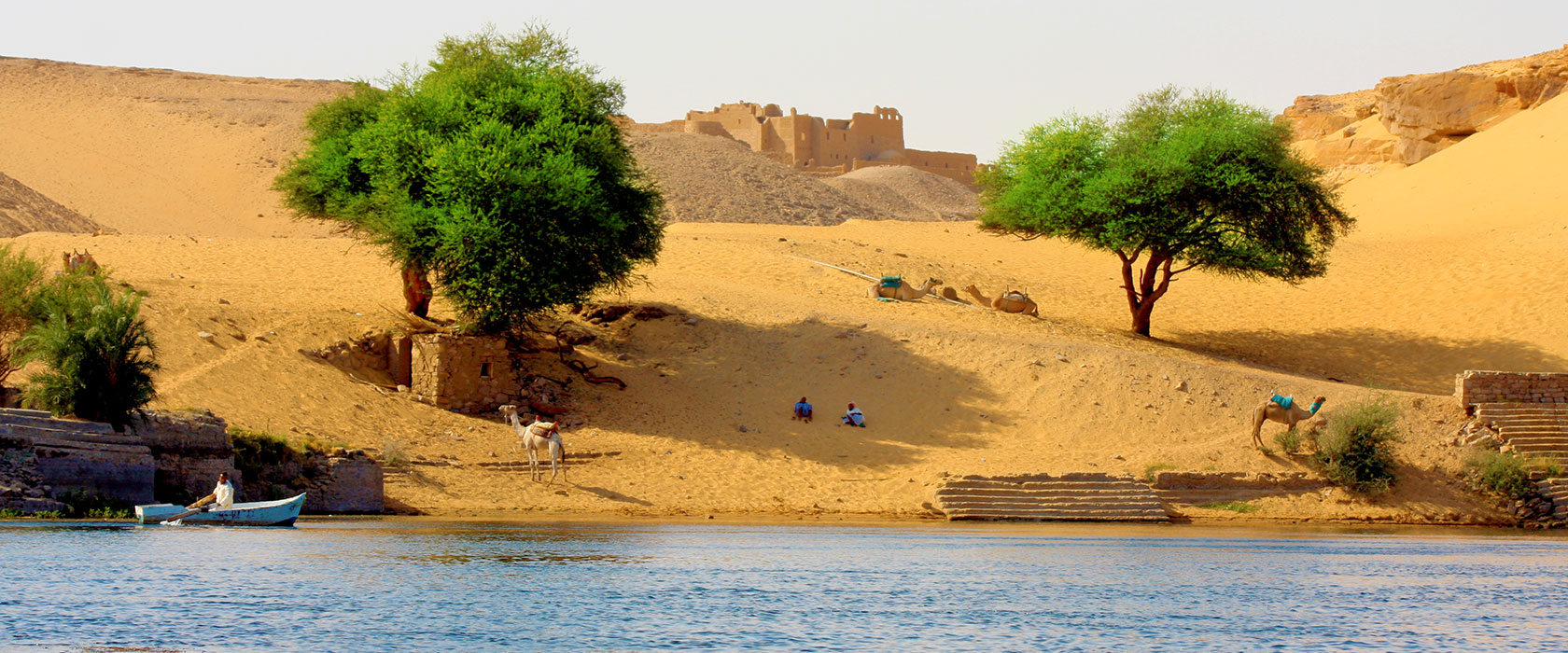
We were ferried to the west bank by motorboat from Aswan, and our camels and their individual handlers were awaiting us by the river. We could hear the racket they were making well before we landed and I’m not just talking about the camels. For some reason most Egyptian men and boys never forego a chance to shout when a simple conversational tone would suffice. Once one starts shouting it soon becomes pandemonium.
There were a couple of middle-aged men whom seemed to be the team leaders, but all of the individual handlers who generally lead the camel by a halter, were teenagers or in a few cases boys as young as 10. Here’s Alison with her camel Caramela and her handler, Mohammed.
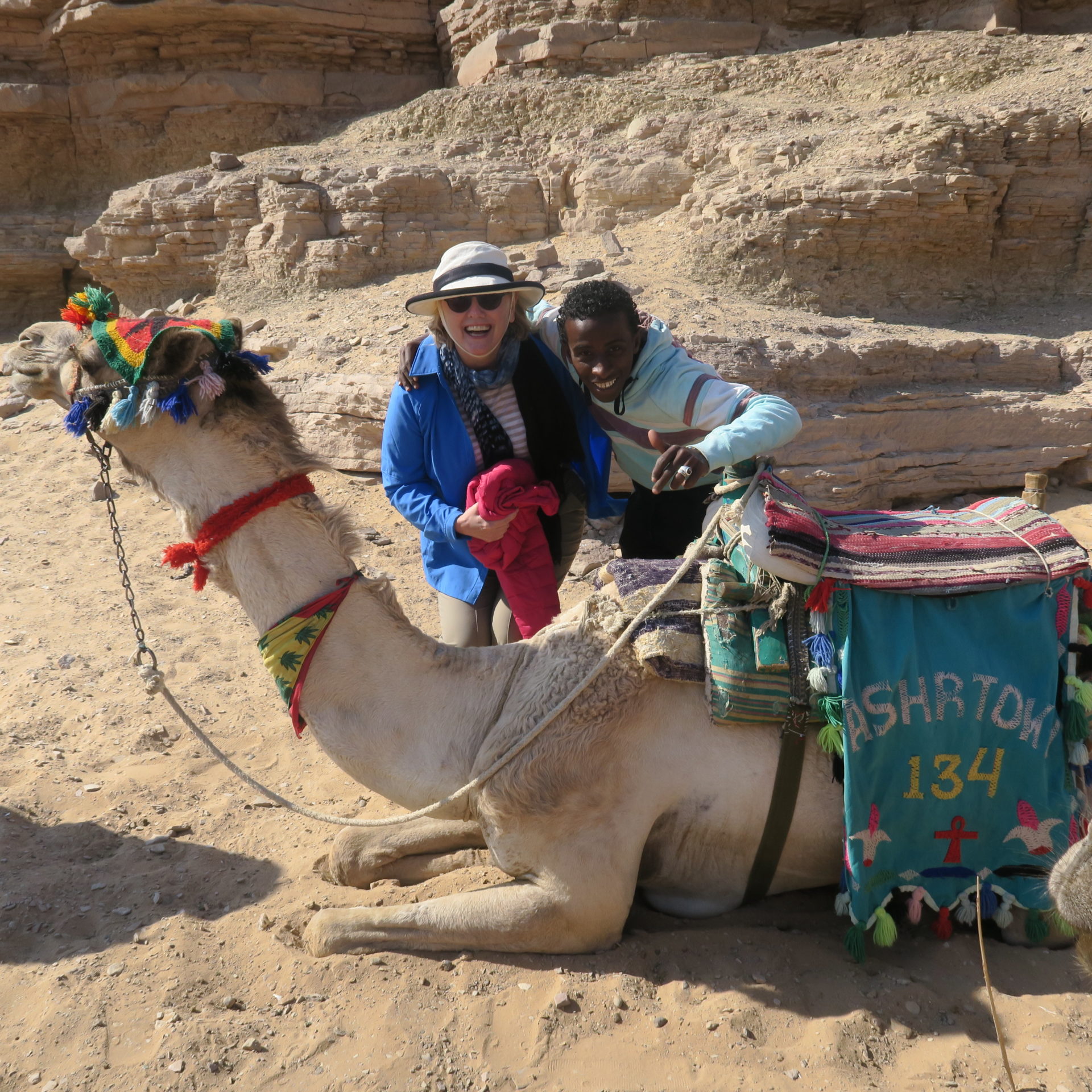
I was not disappointed to be among the last to go through the three step process of getting on the camel, having it rise on its back feet and then lurch upward with its front feet. Here’s what I mean as my camel, Samba, struggles to her feet. It was kind of embarrassing to have my assistant Mahmoud, who couldn’t have been more than twelve, telling me in broken English, “Don’t be nervous Mr. Dale.” I sure the look of rictus on my face was just a passing grimace and not a look of terror.
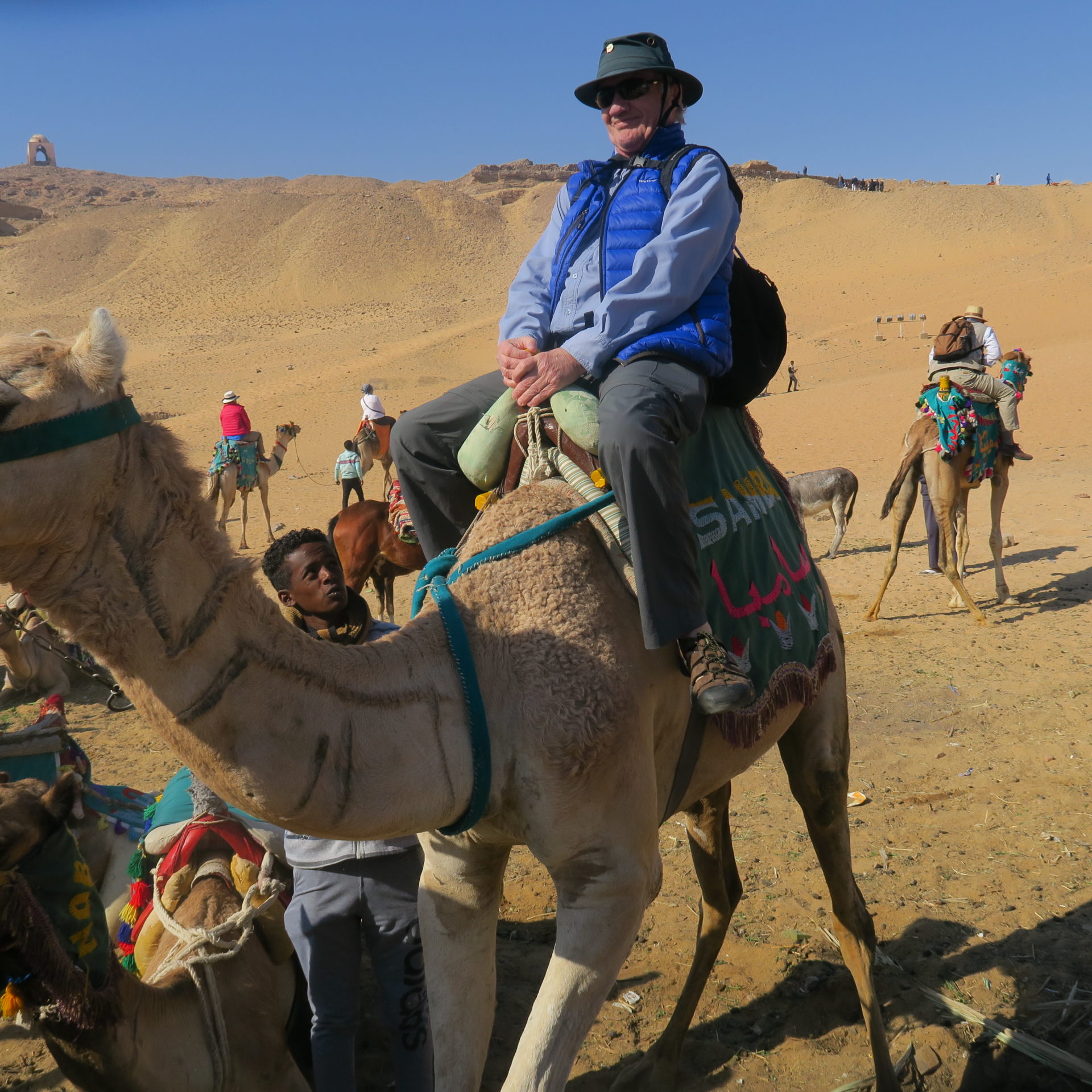
Our journey was going to take us up the slope you can see in the background and soon we were all set. Once you get used to being up that high you make darn sure you hold on to the rope that serves as the steering wheel on a camel. Actually it took very little pressure to get Samba to move to the left or right or stop.
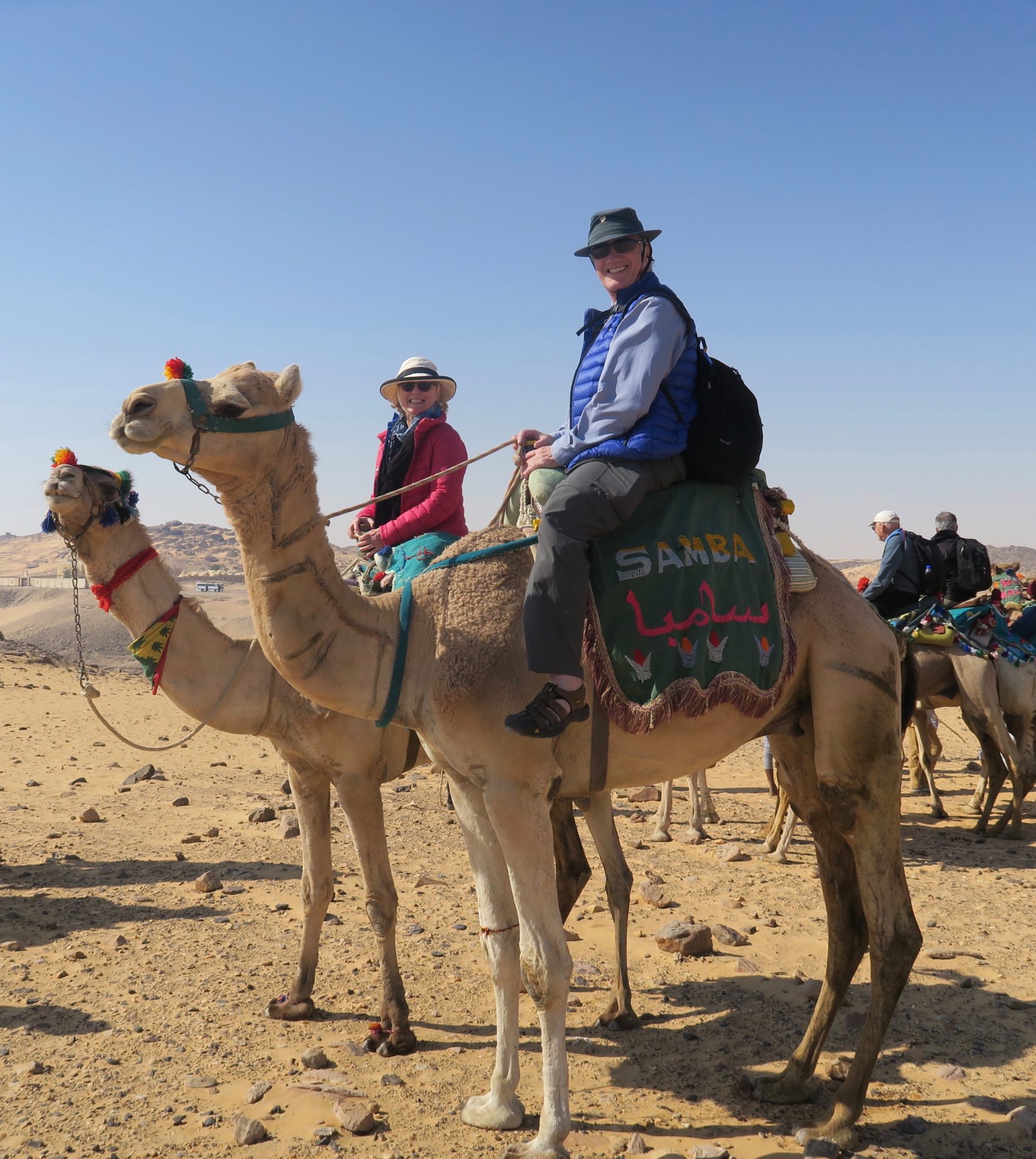
This is the view from the top.
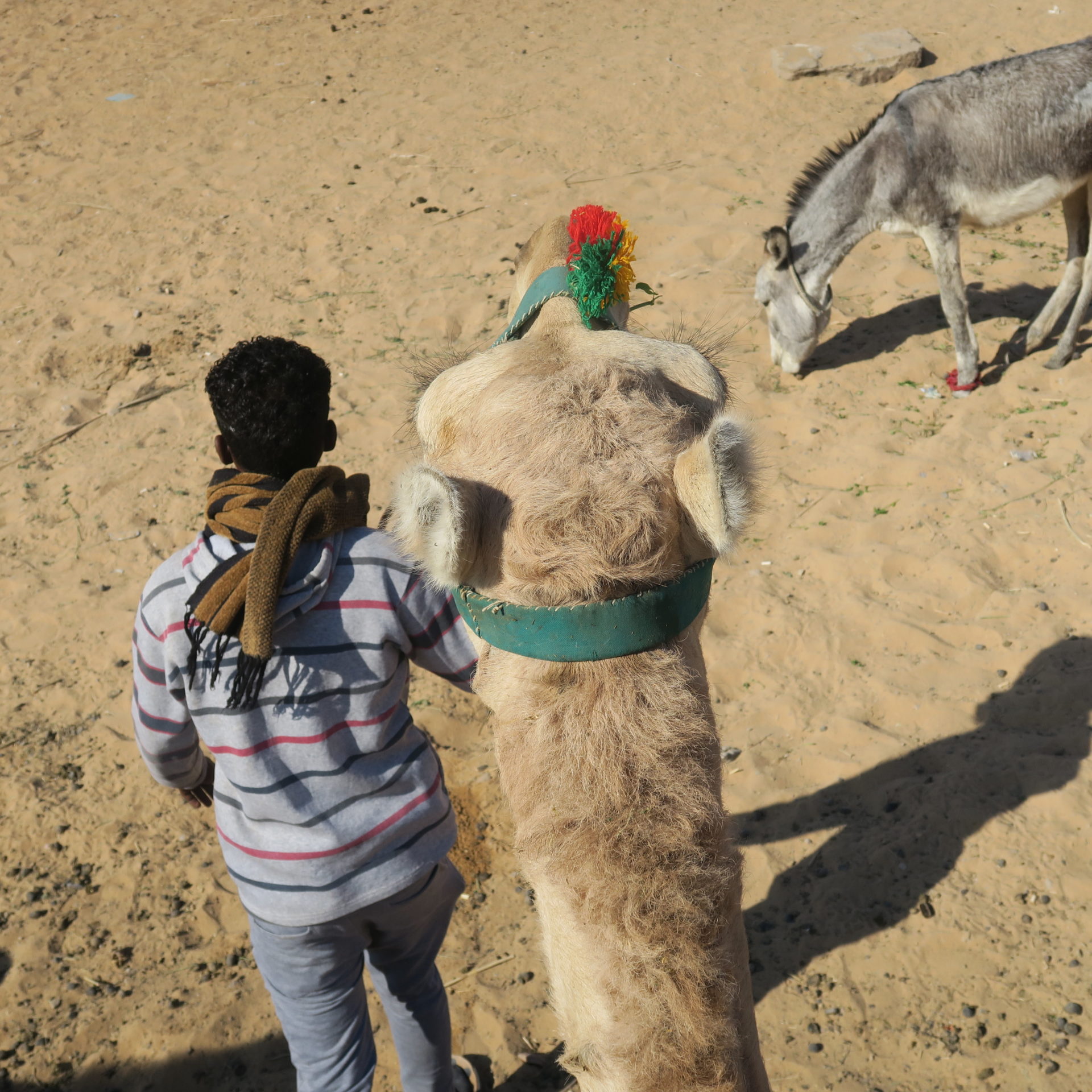
Here’s a shot of me with our Egyptian guide Ahmed Hashem who is a Bedouin by heritage and thus camel riding is no doubt in his genes. He very much looks the part of Sherif Ali, played by the great Egyptian actor Omar Sharif, in Lawrence of Arabia. Can you buy me as a stand in for Peter O’Toole?
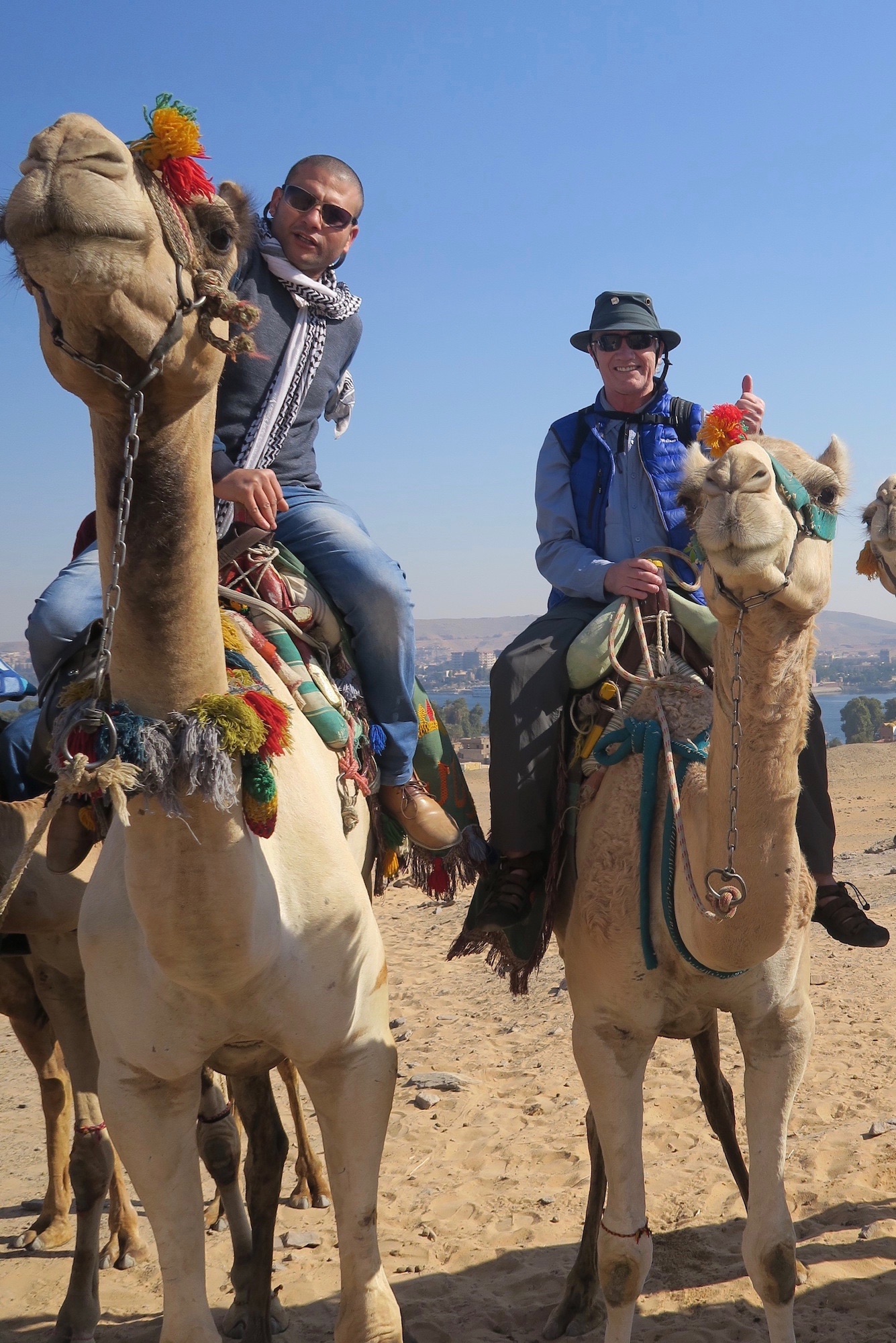
After a few minutes the camels all seemed to naturally line up behind one another in the formation that we would recognize as a desert caravan. The boys generally let us handle the rope and remained nearby in case anyone strayed off route. A couple of them fell behind as they got into a screaming match with each other that seemed to start over nothing. I yelled at them that life was too short for this kind of shit, but they just went on arguing until they both got exhausted.
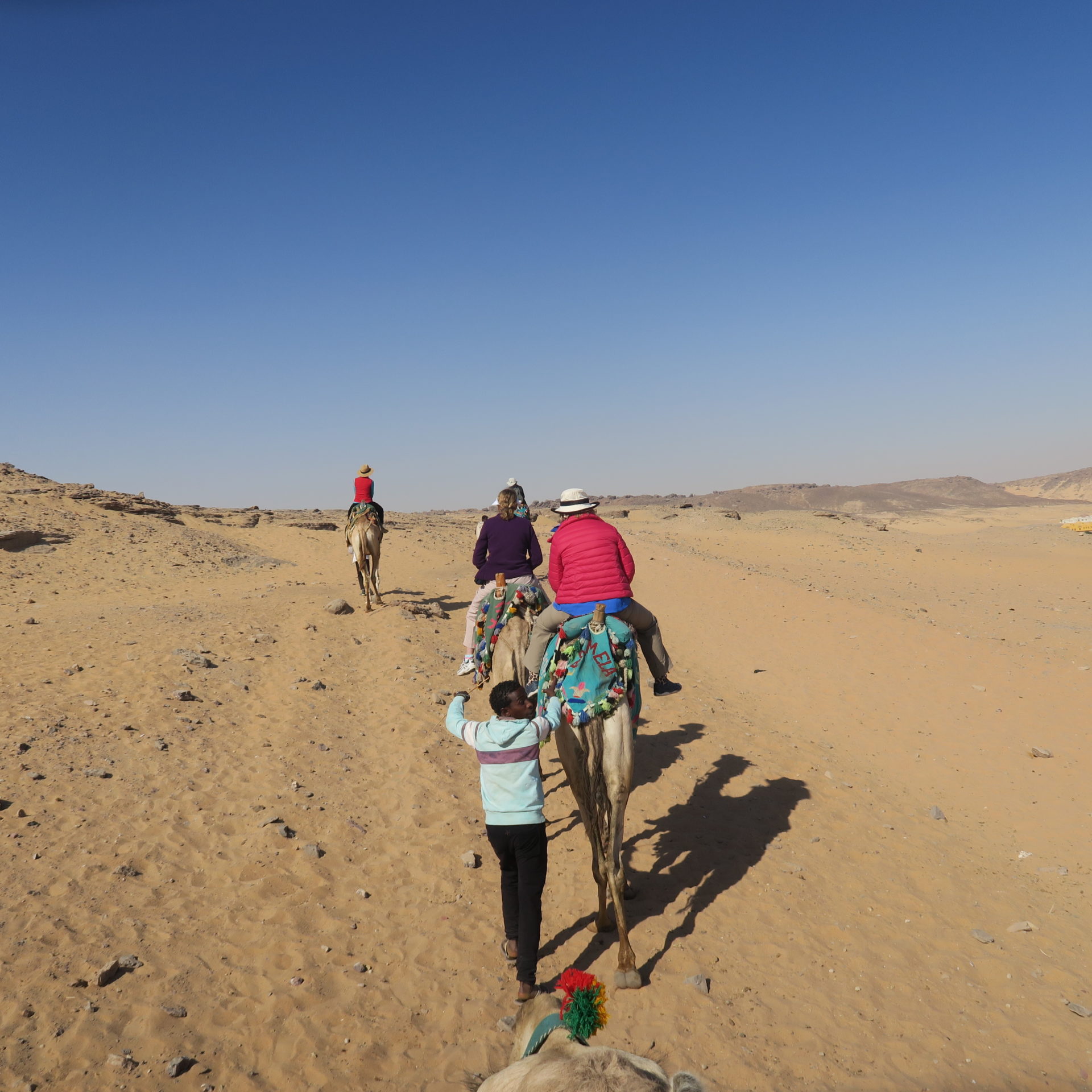
I was a bit apprehensive about the climb up the hill that leads to Saint Simeon Monastery, but the camels were very sure footed and almost tiptoed their way up the very rocky path. I was even more wary of the thought of going back down that hill on our way back.
Saint Simeon Monastery
From quite a distance we could see that St. Simeon Monastery was in fact a deserted ruin, although not too far away was a modern looking building that apparently is still an active Coptic monastery.
The proper name of this place is actually the Monastery of Anba Hatre and you’ll find a fairly detailed history of it by following the link. The name Saint Simeon Monastery was given by modern archaeologists without any real connection to any of the numerous St. Simeon’s that pop up in Christian mythology. It’s certainly a lot more catchy than Anba Hatre.
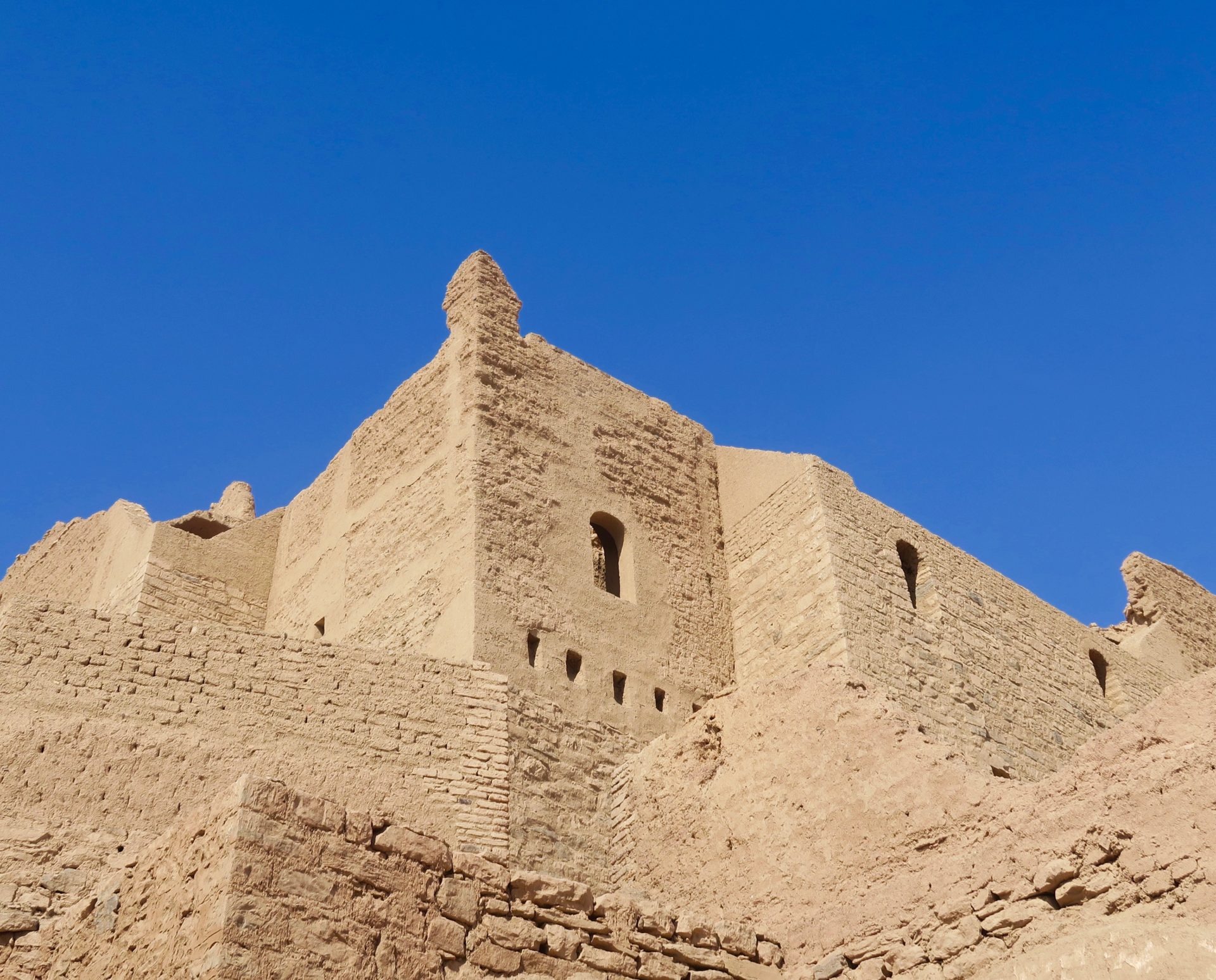
The monastery once held up to a thousand residents and was a popular wayside stop for desert travelers for over six hundred years. Built well before the advent of Islam, the Coptic monks were largely left alone by the Muslims for centuries. Ahmed showed us rooms that were specifically set aside for Islamic guests. Unfortunately the tolerance seemed to end about the same time as the Crusades and in the 12th century the great general Salah-al-Din (Saladin to the west) violently sacked the place and in the century after that it was abandoned for good.
Considering that it hasn’t had any repair work for over 700 years, parts of it are in pretty good shape. This is what’s left of the chapel with one of a number of art students who were visiting at the same time we were.
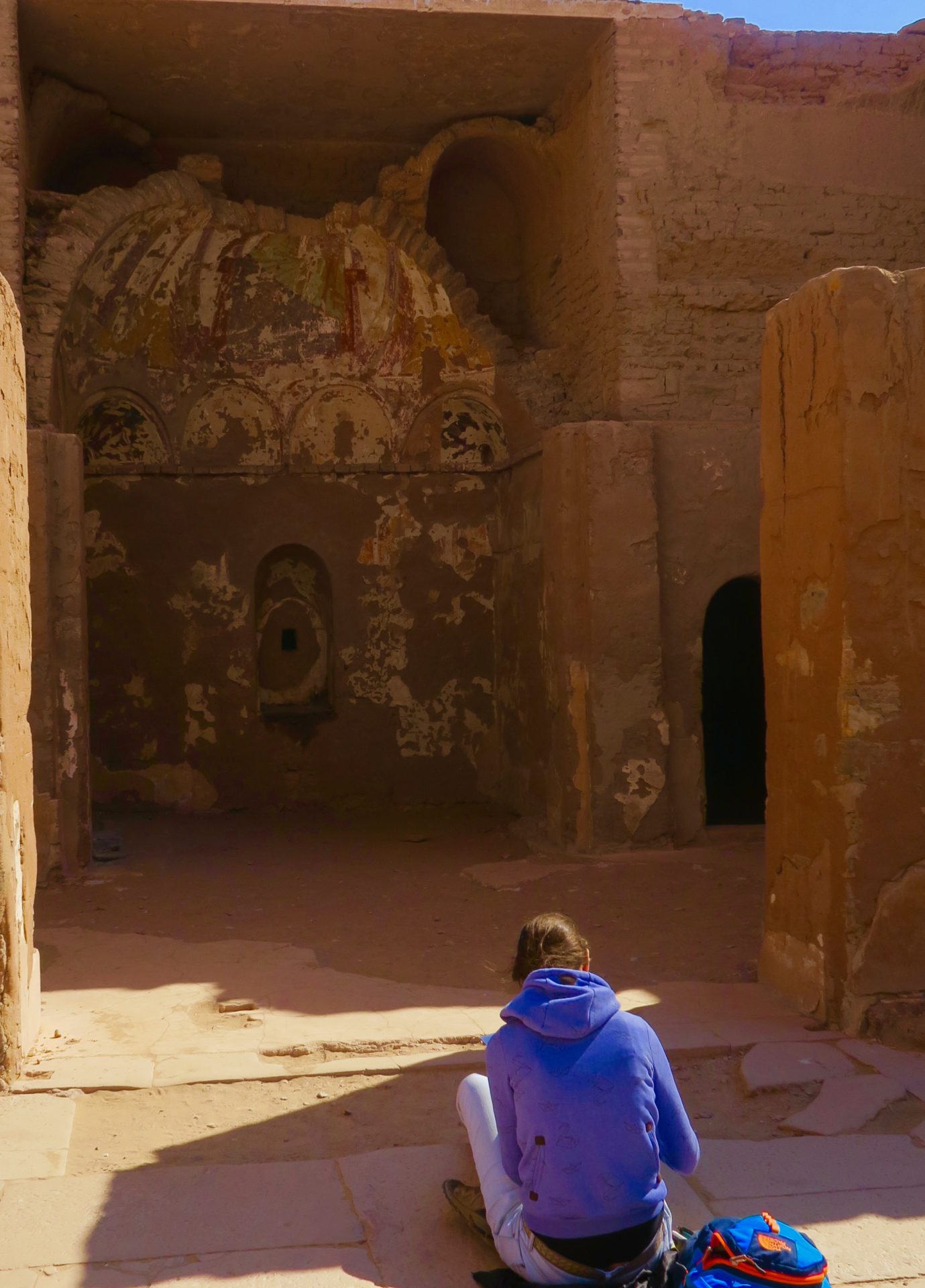
Note the tiny spy hole from which the priests could watch what was going on inside the chapel, just as Alison kept an eye on the rest of us.
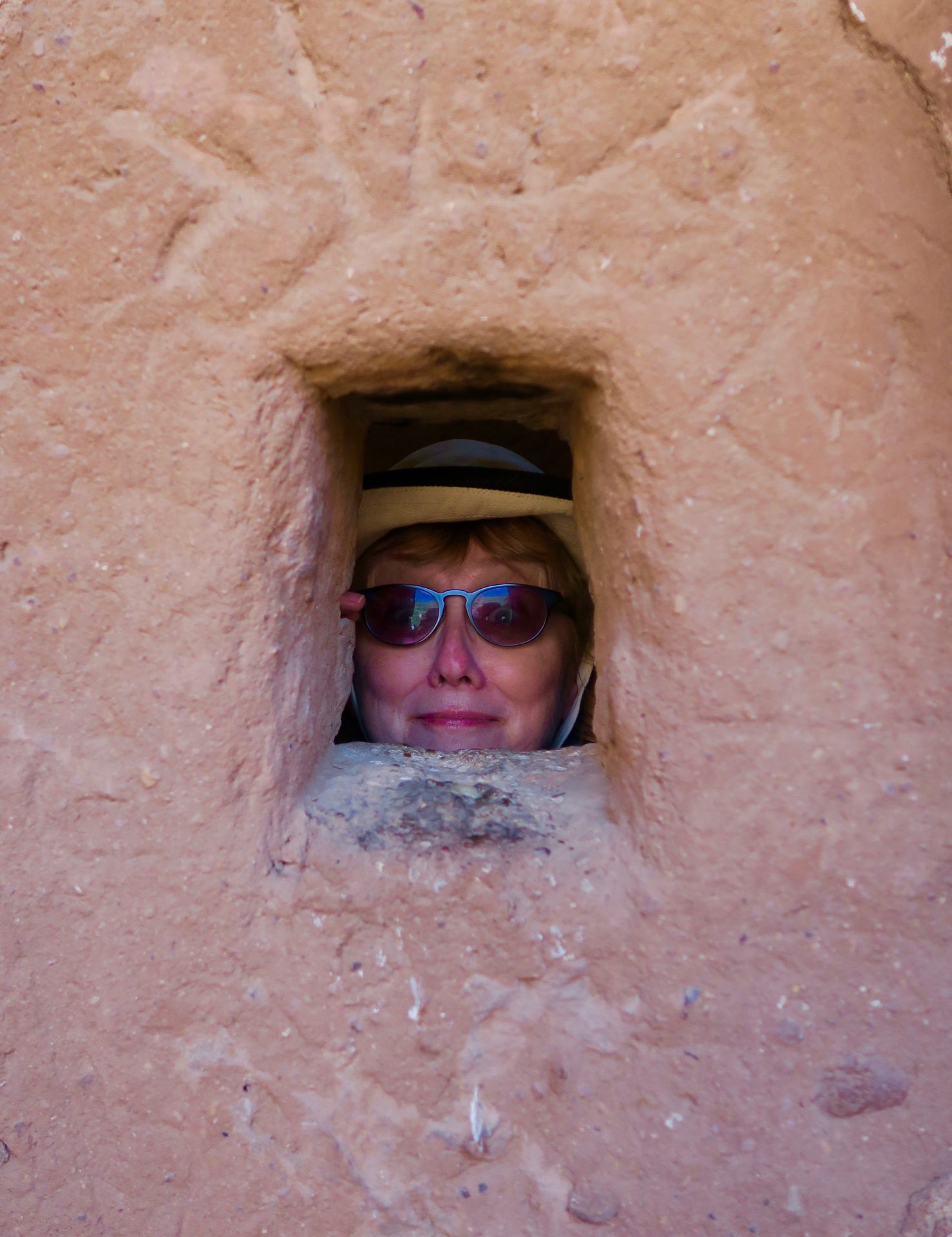
This is the upper floor as it looks today.
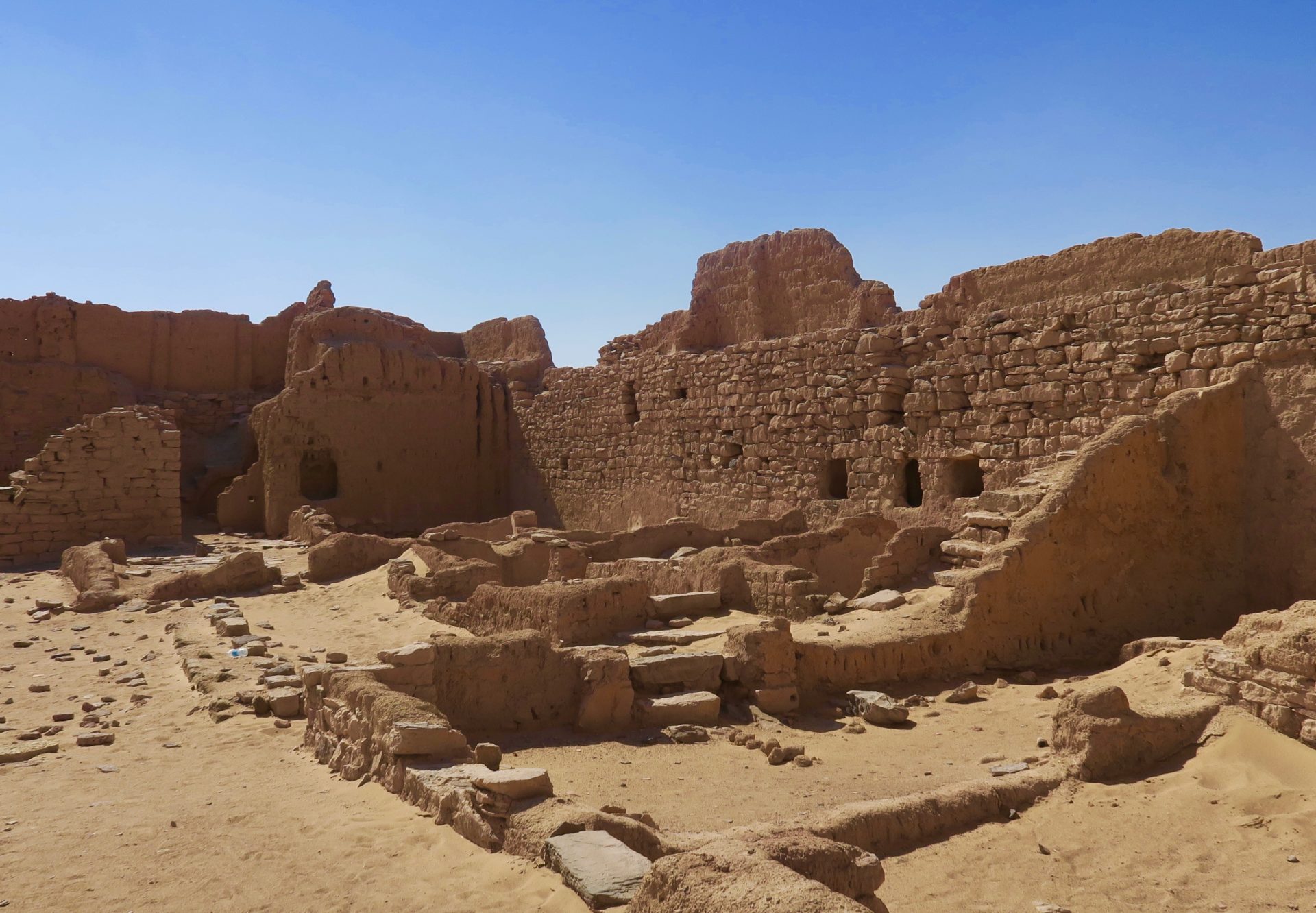
This is what it looked like perhaps a thousand years ago. Each of these monasteries had to be self-sufficient in an environment that was extremely hostile to human life. Can you imagine living here in the heat of a Saharan summer?
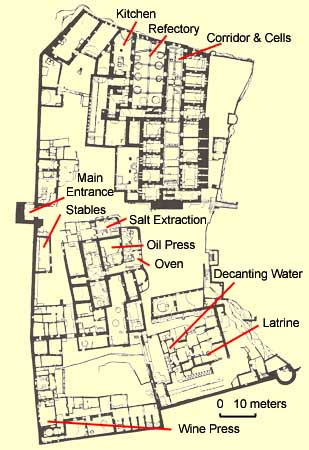
On the plan you can see an oil press and on the ground today there is this marvellously preserved grindstone with three Coptic crosses.
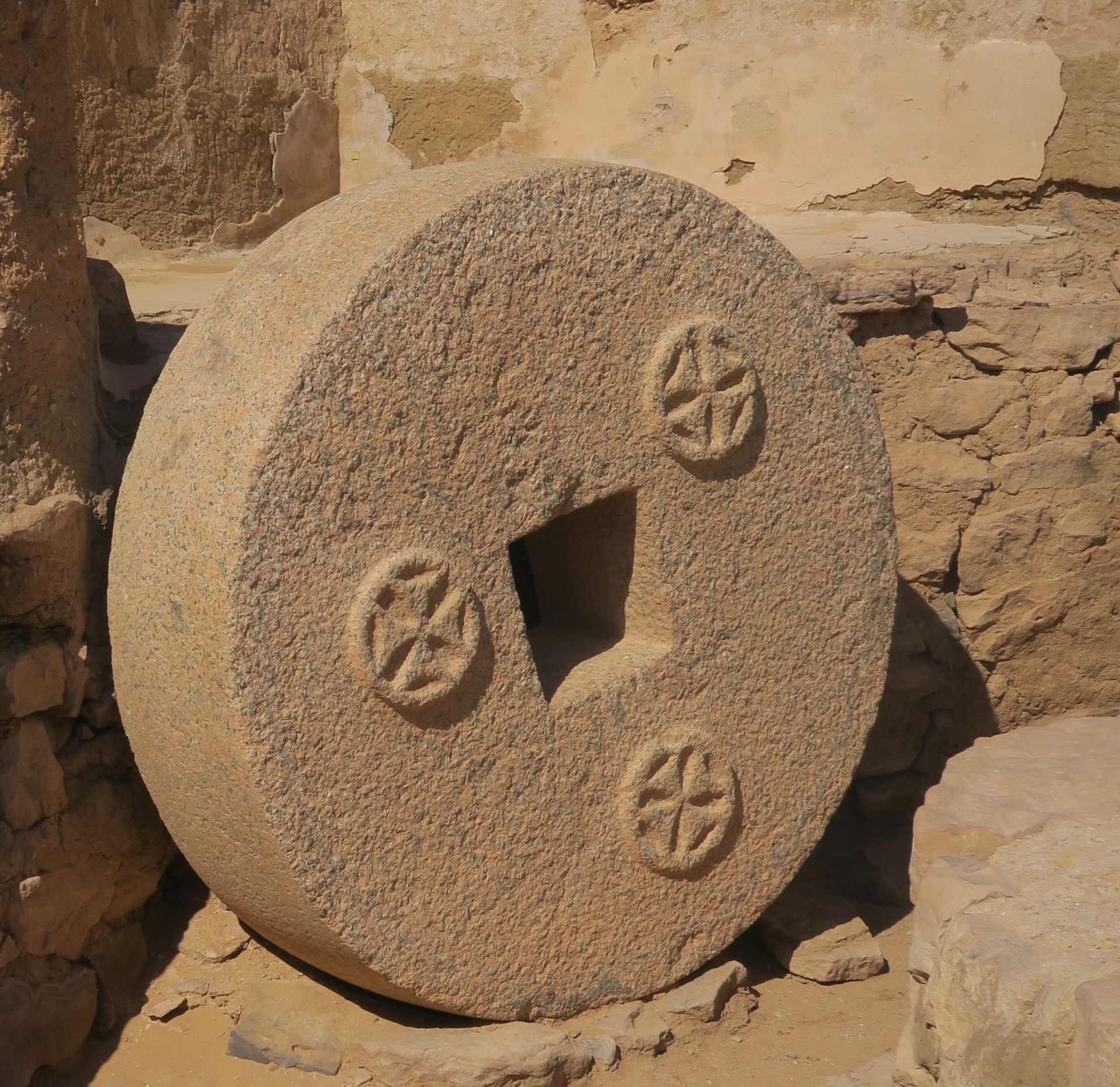
Tourists were not the only ones visiting Saint Simeon Monastery on this day. After receiving permission, I took this photo of a Coptic monk from the monastery next door. And he didn’t even want any baksheesh for posing!
On a more serious note, even though I am not a religious person, I do not scoff at those who are. There was something almost eternal in the look on this man’s face that could make me understand the peace that religion can bring to the truly faithful. Sometimes In wish I could believe.
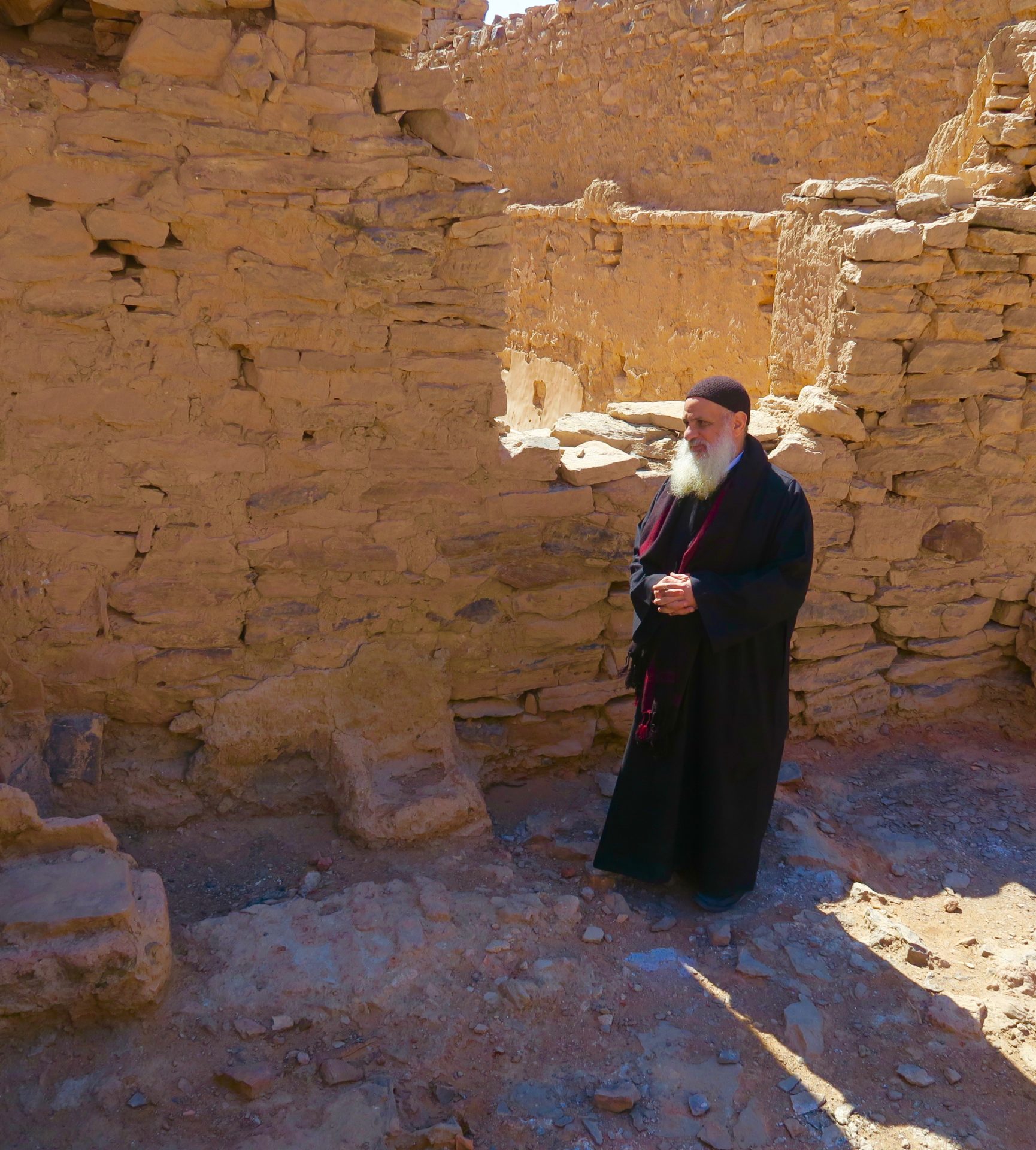
Standing on the top walls of Saint Simeon Monastery I looked out and saw another scene that is intrinsically linked with the Sahara and Arabian deserts – a lone camel rider amidst a sea of sand. Where was he going or coming from? Who knows, but it makes for a great picture.
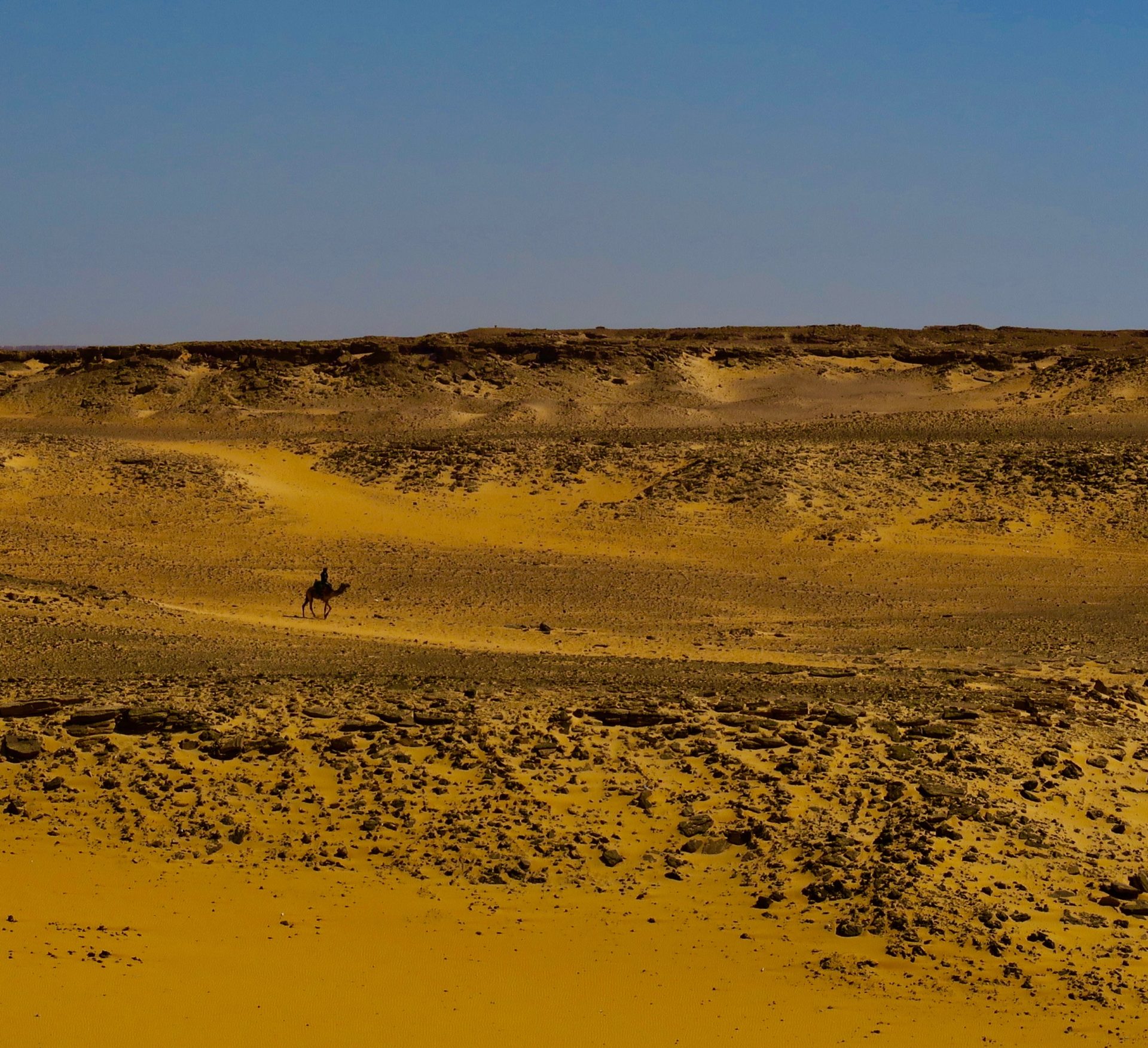
My fears about having to ride the camels down the steep path turned out to be unfounded as the handlers had them waiting at the bottom of the path from whence we remounted and made or way back to the Nile where Ahmed took care of tipping them for us and we waved goodbye as we got in the boat and headed back to Aswan.
As Saint Simeon Monastery faded into the background I realized I’d just had another of those “Pinch me, I’m really here” moments which seem to happen a lot on Adventures Abroad tours. I can now add camel jockey to the many occupations I’m not good at.
BTW if you really don’t want to ride a camel or physically cannot, AA provides ground transportation to and from the river landing to Saint Simeon Monastery. A couple of people in our group opted for that choice.
I know I promised to tell you about a Nile cruise in my last post, that will have to wait until next time. So long from Aswan once again.
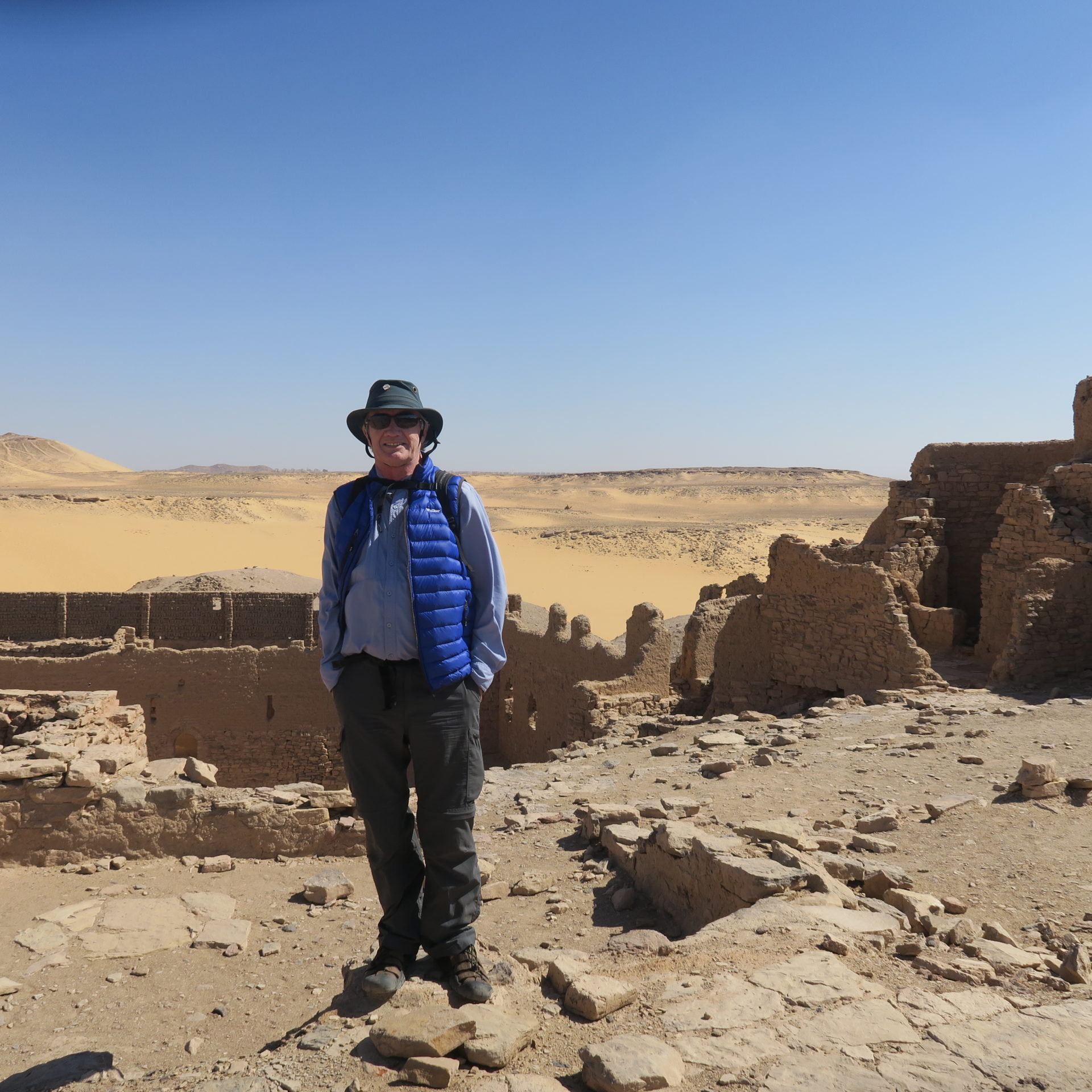
Here is a link to the Egypt photo gallery with pics from every place we visited.

